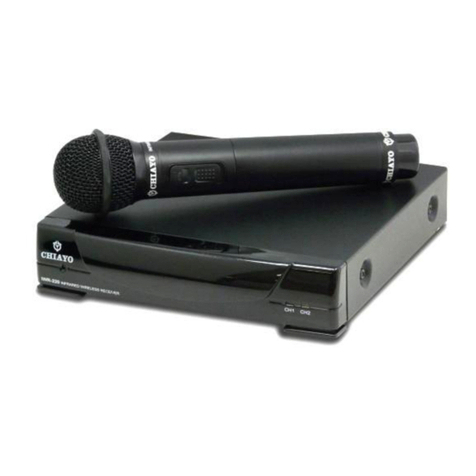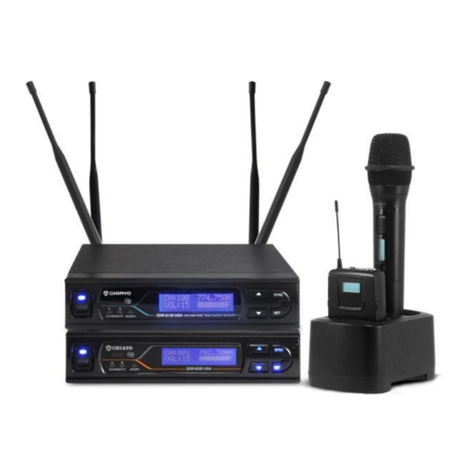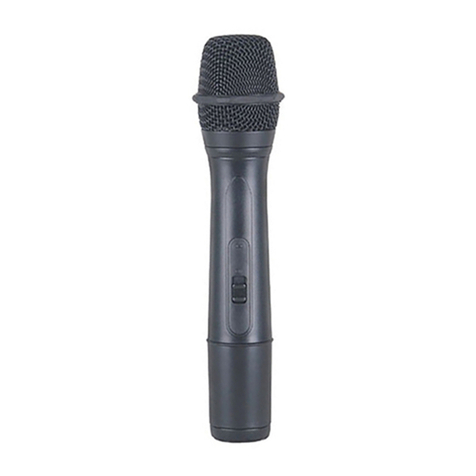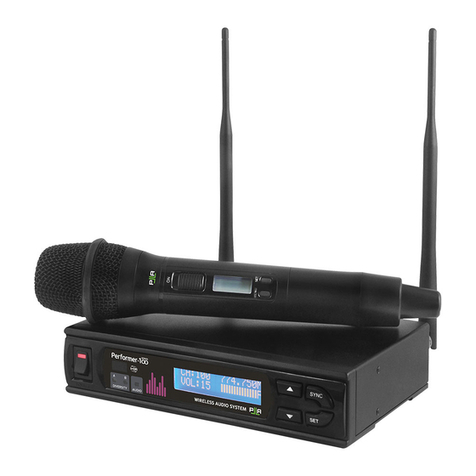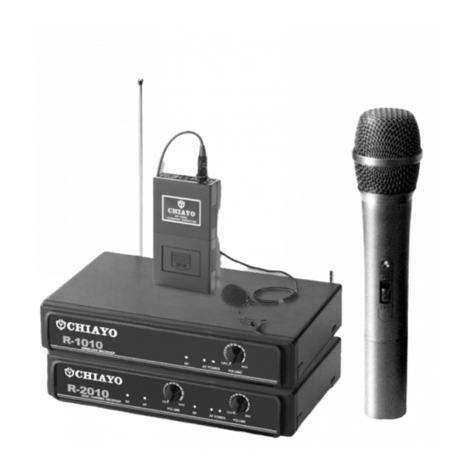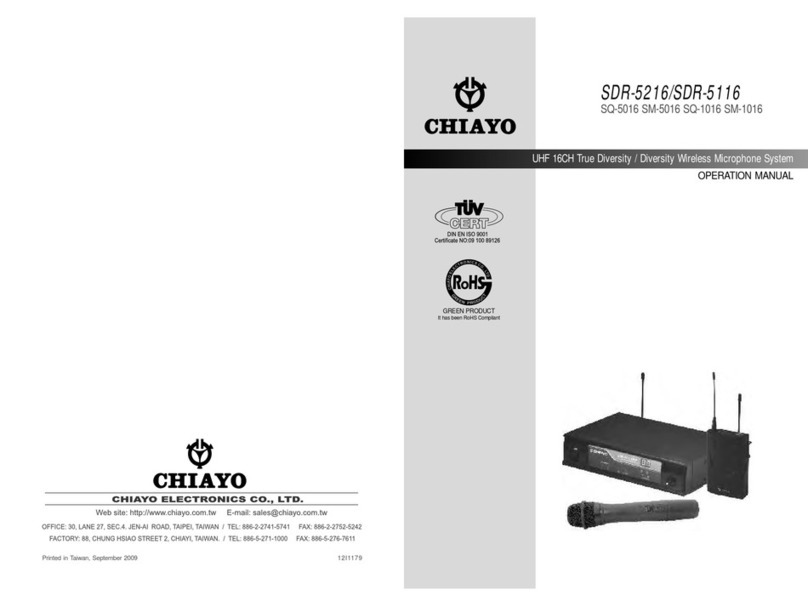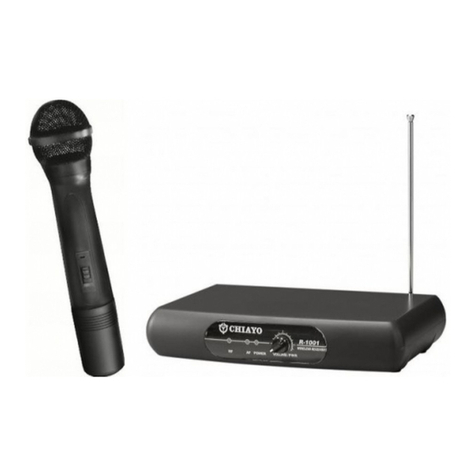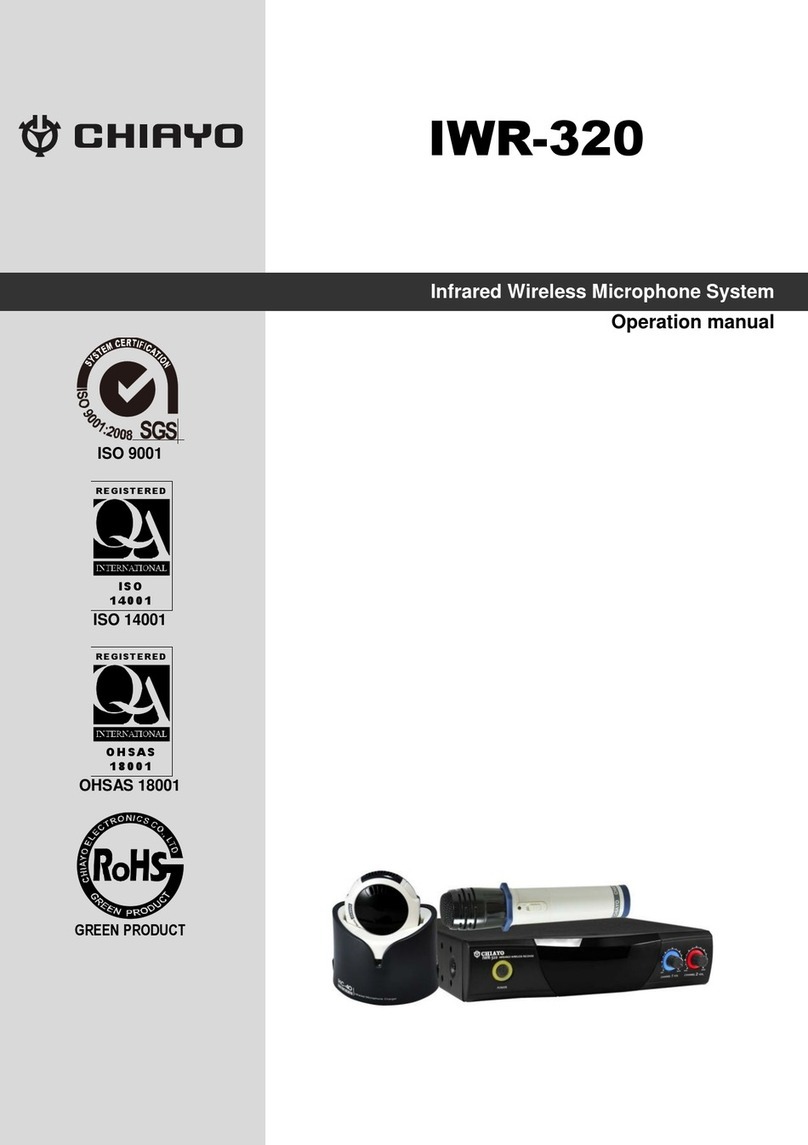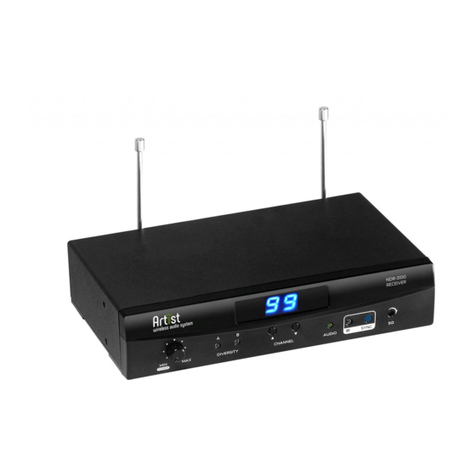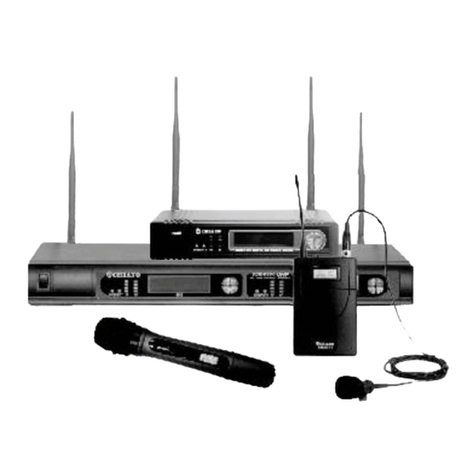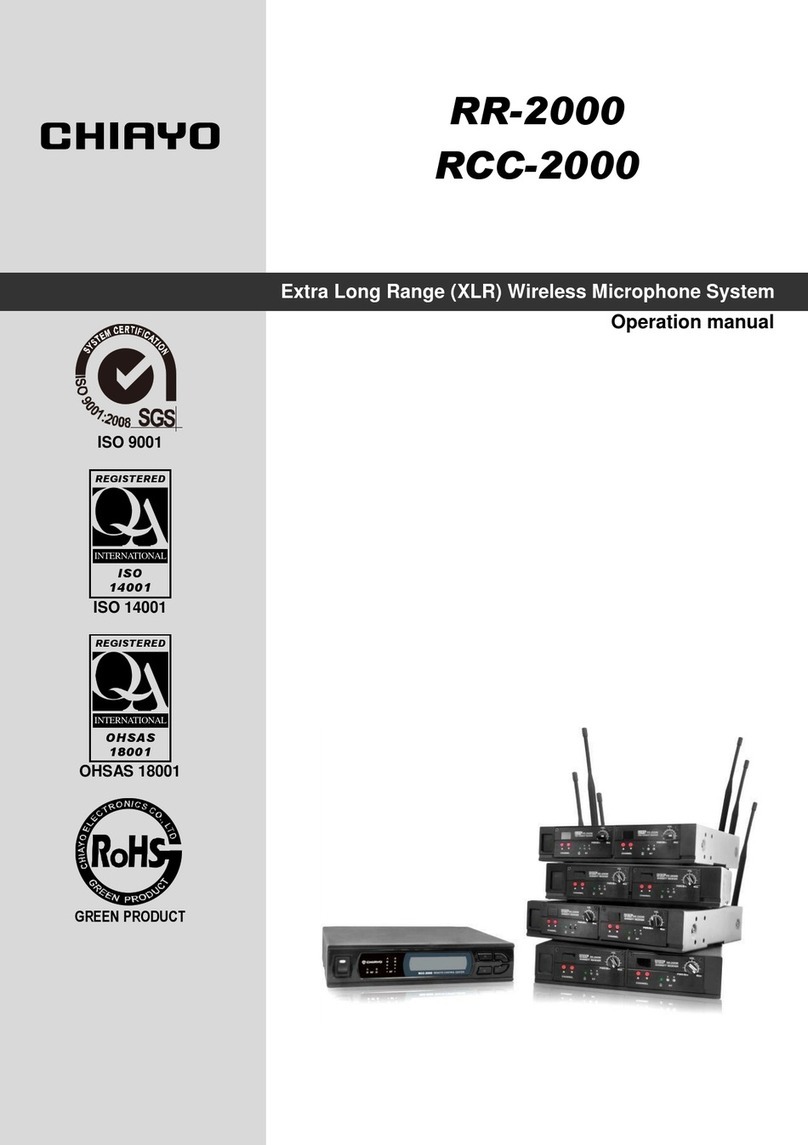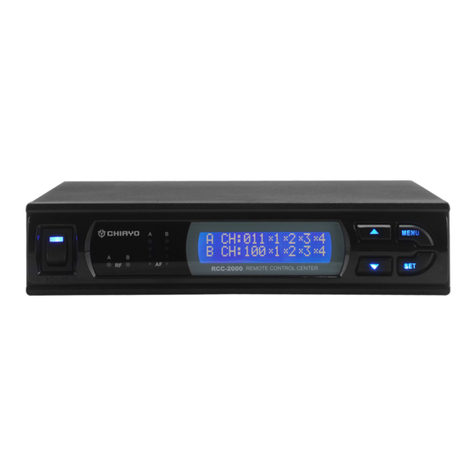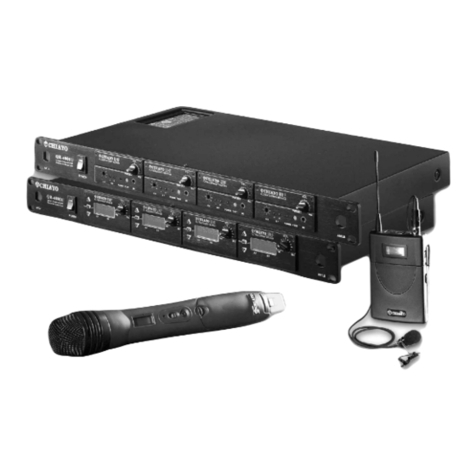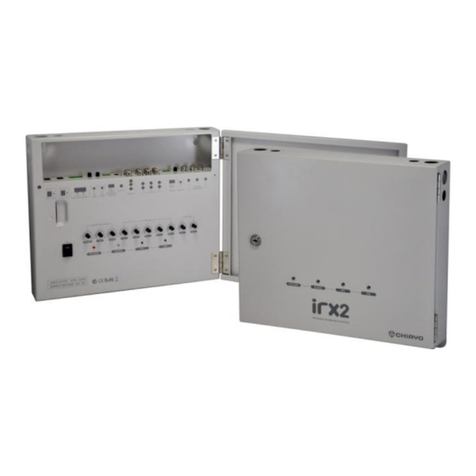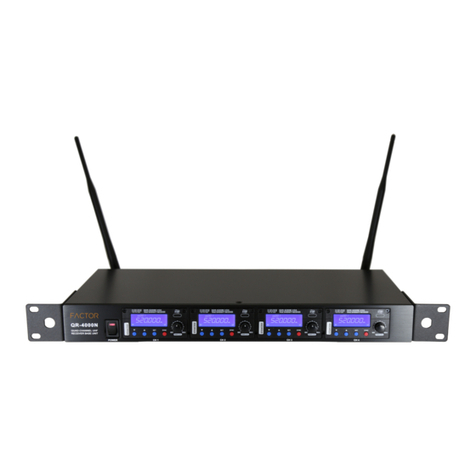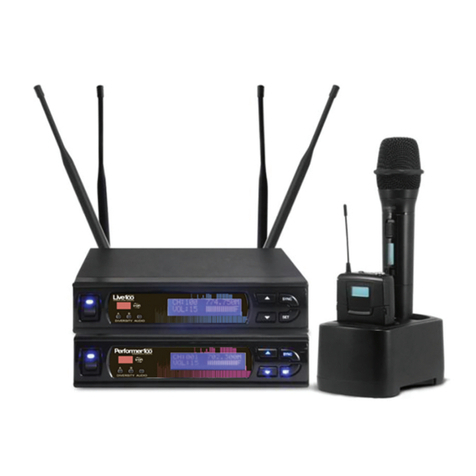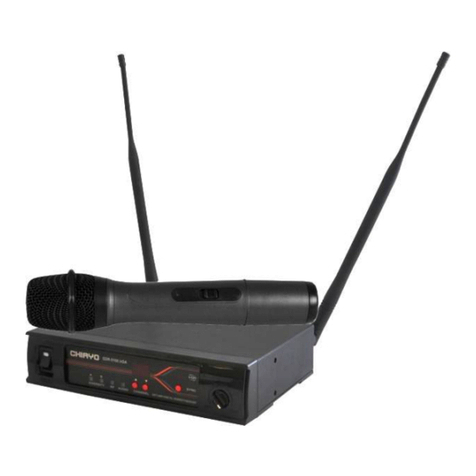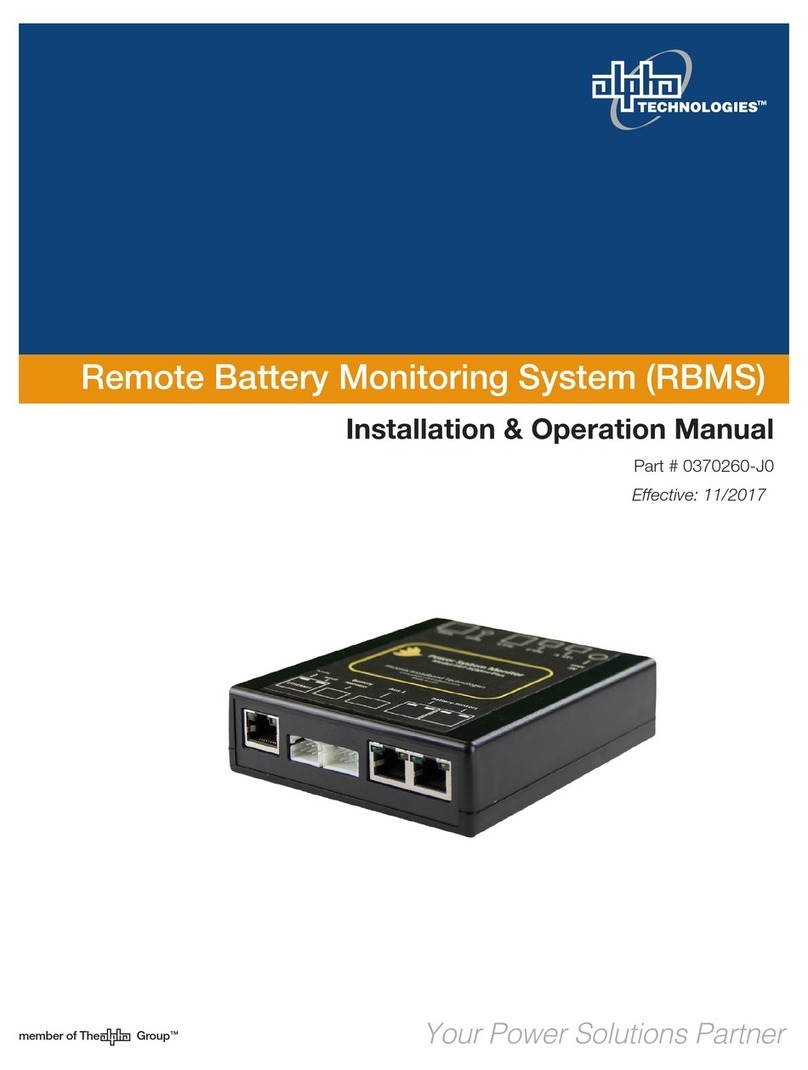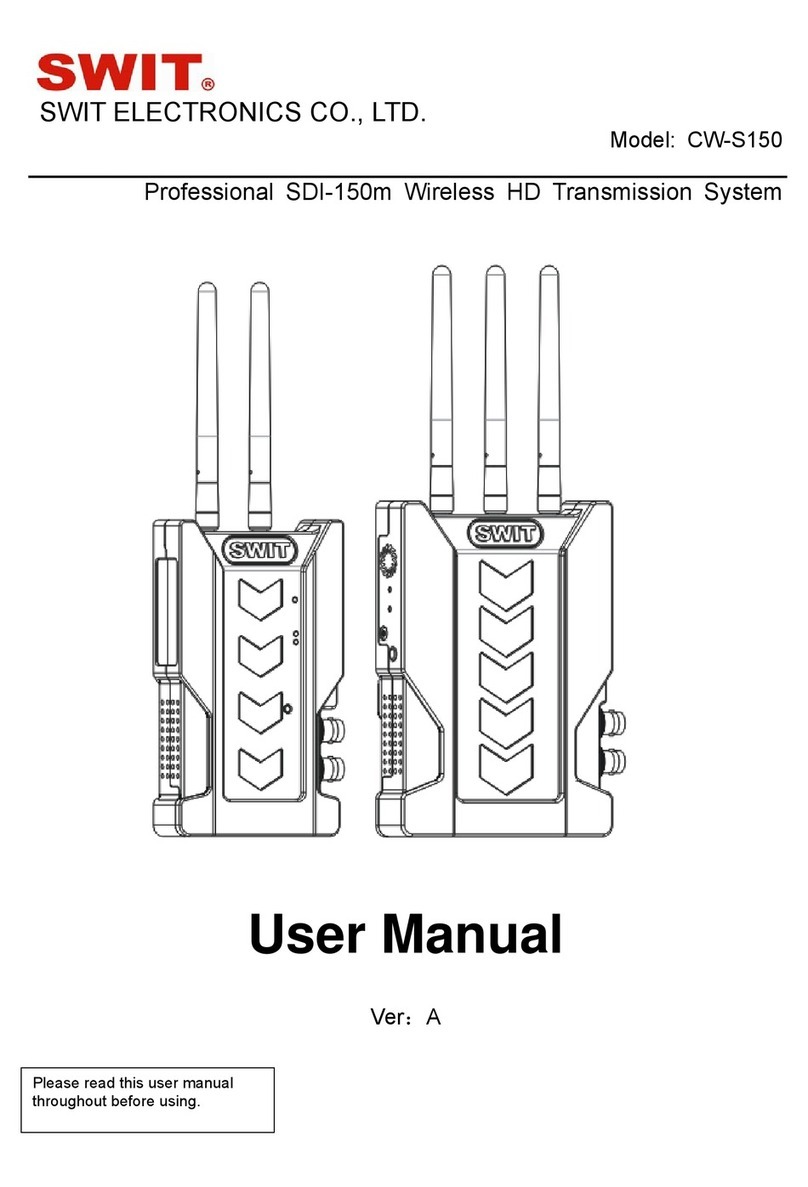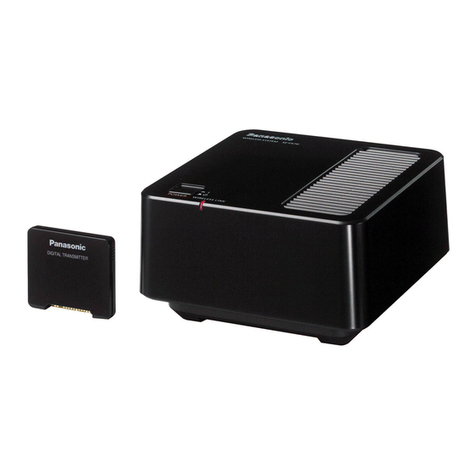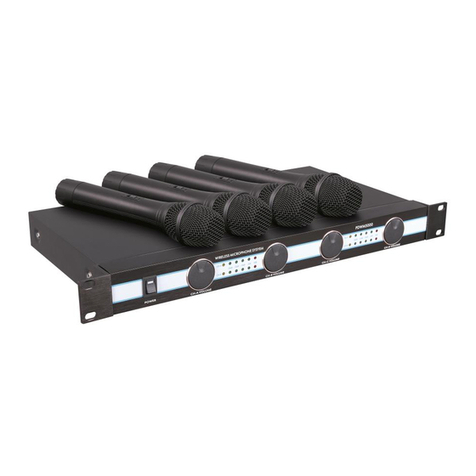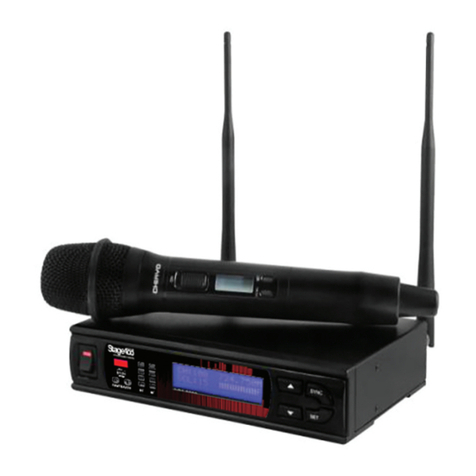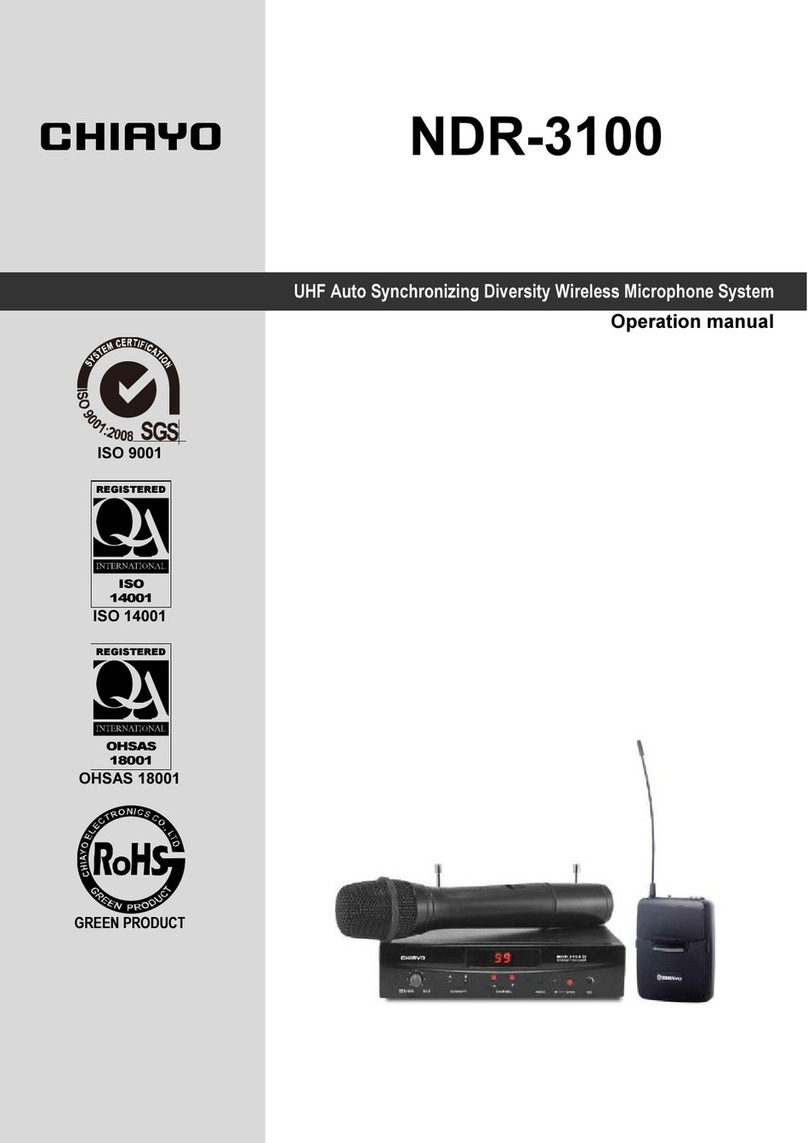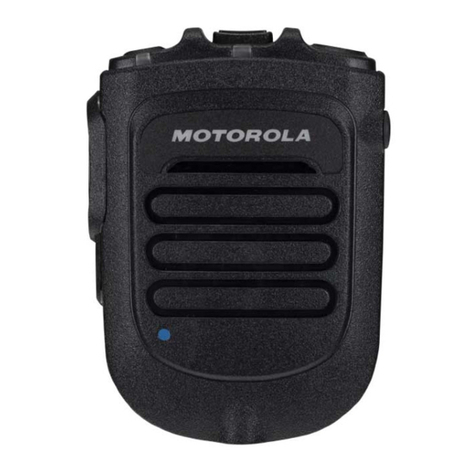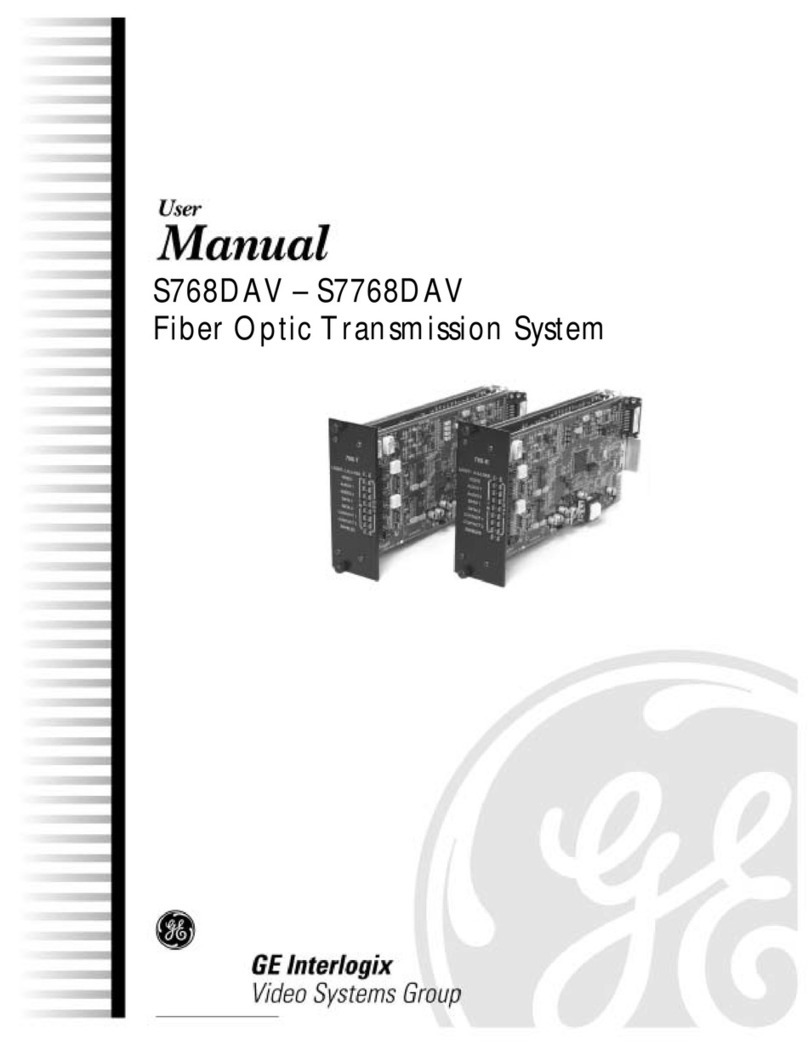Operating the Wireless Microphone System.
To use the First wireless system, switch on the receiver module power supply switch WM1(4) .
Switch on the corresponding matching transmitter or handheld microphone ( please refer
to the operating instruction of the individual transmitter ). When RF signal is being received
by the receiver, the receiver RF signal indicator 1 ( 2 ) will light up. Rotate the control
WM1 ( 4 ) and MASTER volume control ( 10 ) clockwise to increase the volume. When
voice is spoken into the microphone, amplified sound should be heard over the built-in
speaker.
This instruction is for system which is equipped with two wireless receiver modules, To use
the Second wireless system, switch on the receiver module power supply switch WM2 ( 5 ).
Switch on the corresponding matching transmitter or handheld microphone. When RF
signal is being received by the receiver, the receiver RF signal indicator 2 ( 3 ) will light
up. Rotate the WM 2 control ( 5 ) and MASTER volume control ( 10 ) clockwise to increase
the level. When voice is spoken into the microphone, amplified sound should be heard
over the built-in speaker.
Operating the Wired / Cable Microphone
To use the wired microphone, simply plug in the wired microphone connector into the XLR
/ Phone jack combo connector ( 1 ) . This unique connector accept either XLR or 1/4
Phone Jack male connector. Rotate the MIC In volume control ( 11 ) and MASTER Volume
control ( 10 ) clockwise to increase the volume. When voice is spoken into the wired
microphone, amplified sound should be heard over the built-in or external speaker.
To use a second wired microphone, simply plug in the wired microphone cable
connector into LINE IN ( 6 ). Rotate the volume control ( 6 ) and MASTER volume control
clockwise to increase the volume. When voice is spoken into the wired microphone,
amplified sound should be heard over the built-in or external speaker.
Both wired and wireless microphone could be used simultaneously as there is a built-in
mixer to mix both input signals.
When all the levels are set, simply use the MASTER volume control ( 10 ) as main control.
Function of Speaker out
There are two types of Speaker out jack.
Speaker out ( unswitched ) (18 ) When an external speaker is connected to this output,
both the internal speaker of and the external speaker will have sound.
Speaker Out ( switched ) ( 19 ) When an external speaker is connected to this output, the
internal speaker will be muted and only the external speaker will have sound.
8
